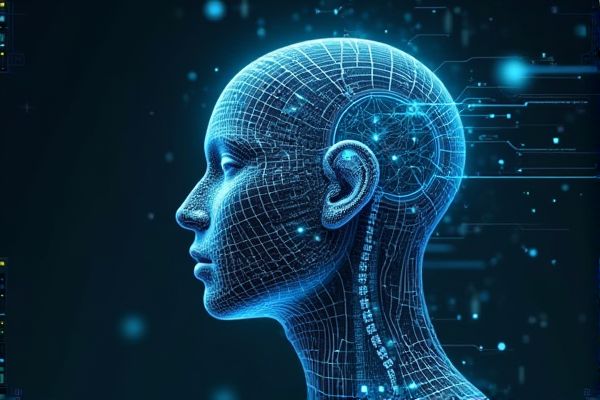
AI enhances digital photography through advanced image processing techniques, enabling improved color correction, noise reduction, and sharpening. Machine learning algorithms analyze photographic elements, allowing for automatic scene recognition and adjustment of settings, resulting in optimal picture quality. AI-powered tools offer features such as facial recognition, object detection, and intelligent cropping, making the editing process faster and more intuitive. These innovations empower photographers, both amateur and professional, to achieve stunning results with greater ease and efficiency.
AI usage in digital photography
Image Enhancement
AI technology can significantly improve the quality of digital photography by enhancing image resolution and clarity. Tools like Adobe Photoshop utilize AI algorithms to reduce noise and sharpen images, making them more appealing. The ability to automatically adjust lighting and colors can save photographers time during the editing process. With AI-driven features, photographers have the chance to enhance their work in ways that were not possible before, potentially attracting more clients.
Noise Reduction
AI can significantly enhance digital photography by improving noise reduction techniques. For example, software like Adobe Lightroom uses AI algorithms to analyze and reduce noise while preserving image details. This capability allows photographers to capture high-quality images in low-light conditions, raising the potential for better creative outcomes. The chance of achieving professional-quality results increases with the effective application of such advanced technology.
Color Correction
AI can enhance digital photography by streamlining the color correction process, making it more efficient and effective. Tools utilizing AI can analyze images to automatically adjust hues and tones to achieve optimal results, reducing the time photographers spend on editing. For instance, software like Adobe Lightroom employs AI to suggest corrections based on the image's content. This potential for automation not only improves the quality of images but also allows photographers more time to focus on creativity.
Facial Recognition
AI in digital photography enhances image processing and editing capabilities, allowing users to achieve professional-quality results with minimal effort. Facial recognition technology, often employed in apps like Google Photos, enables automatic organization and tagging of images, improving user experience. This integration of AI can offer photographers greater efficiency in managing their portfolios. Harnessing these tools may provide advantages in creative expression and workflow optimization.
Background Removal
AI can significantly enhance digital photography through efficient background removal techniques. For instance, software programs like Adobe Photoshop leverage AI algorithms to isolate subjects with precision, improving the overall aesthetic of images. Businesses such as e-commerce platforms stand to benefit from this capability, as clear product images can lead to higher conversion rates. The potential for saving time and increasing image quality presents a competitive advantage in the photography industry.
Automated Tagging
AI usage in digital photography enhances automated tagging by analyzing images and identifying key features. This process can significantly streamline the workflow for photographers, making it easier to organize and search through large collections. For instance, an application like Adobe Lightroom utilizes AI to suggest tags based on the content of photos, improving efficiency. The chance of increased visibility for photographers through better categorization and organization of their work becomes a possibility with these advancements.
Style Transfer
AI usage in digital photography, particularly in style transfer, can enhance the creative process by allowing photographers to apply artistic styles to their images. This technology enables users to transform photographs into artworks resembling famous styles such as those of Van Gogh or Picasso. By experimenting with various style transfer algorithms, photographers can produce unique visual interpretations, increasing the likelihood of attracting viewer attention. Institutions like the Massachusetts Institute of Technology (MIT) are exploring these advancements, showcasing the potential for innovation in imaging and design.
Resolution Upscaling
AI usage in digital photography can significantly enhance image quality through resolution upscaling. For instance, software like Adobe Photoshop utilizes machine learning algorithms to increase image resolution while preserving detail and clarity. This technology allows photographers to produce high-resolution prints from lower-quality images, expanding their creative possibilities. The chance to achieve professional-grade results even with standard equipment can provide a competitive edge in the industry.
Scene Detection
AI can enhance digital photography through improved scene detection algorithms, which can automatically categorize and adjust settings for various environments. For instance, a software tool may recognize a beach scene and optimize exposure and color balance accordingly. This capability increases the chances of capturing high-quality images with minimal manual adjustments. Photographers can leverage platforms like Adobe Lightroom that utilize these AI features to streamline their workflow.
Photo Organization
AI technology can enhance digital photography by automating tasks such as editing and sorting images. For instance, tools like Adobe Lightroom utilize AI to improve photo organization, making it easier for photographers to manage large collections. This not only saves time but also offers enhanced search capabilities based on image content. The potential for increased efficiency and better quality in photo management is a significant advantage for creators in the industry.
 techknowy.com
techknowy.com